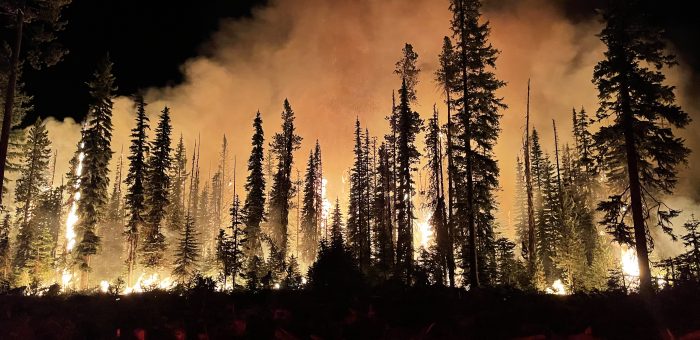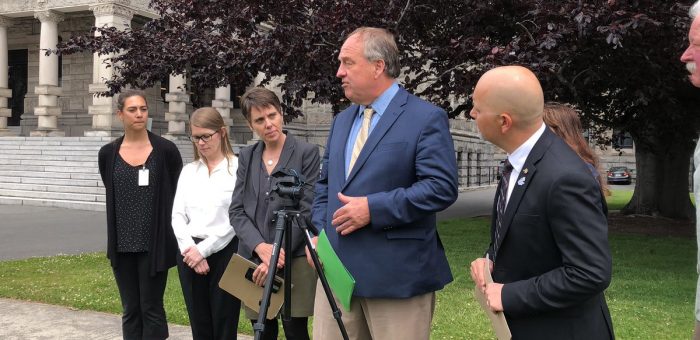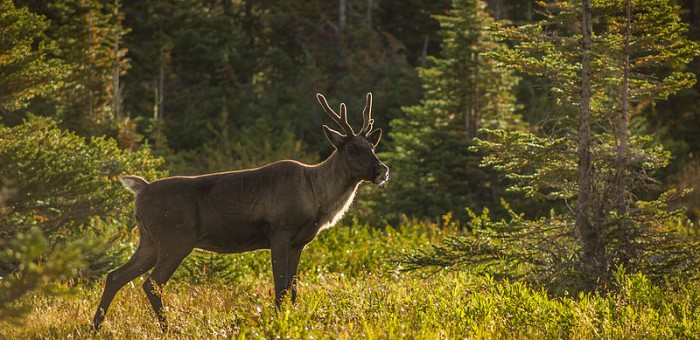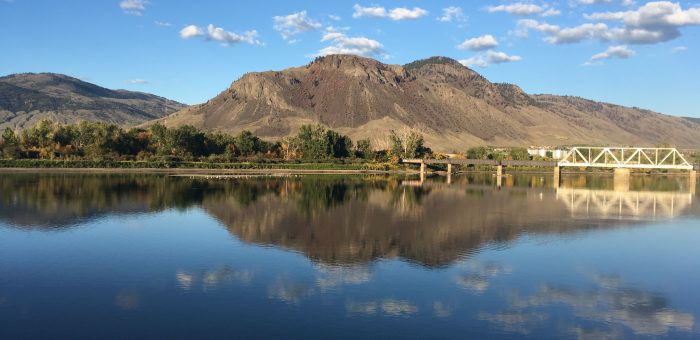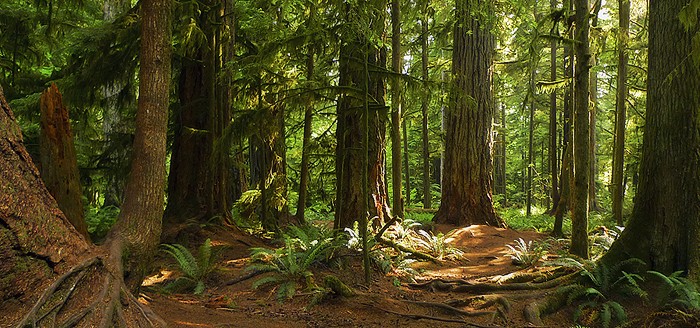Forests
Yellowknife and Kelowna wildfires burn in what is already Canada’s worst season on record
I published an article in The Conversation today. It is reproduced below as Facebook appears to be blocking reposting of Canadian news articles.
The Article
The devastating wildfire that destroyed the historic Maui town of Lahaina in Hawaii was still making headlines when the Northwest Territories issued an evacuation order for Yellowknife and British Columbia declared a provincewide state of emergency.
All 22,000 residents of Yellowknife are being evacuated in advance of a wall of flame from out-of-control wildfires converging on the capital city. Yet this isn’t the first time an entire Canadian town has been cleared.
In May 2016, all 90,000 residents of Fort McMurray, Alta., were evacuated shortly before wildfires engulfed 2,400 homes and businesses with a total cost of more than $4 billion.
In 2017 in British Columbia, the wildfire season led to the evacuation of more than 65,000 residents across numerous communities, costing $130 million in insured damages and $568 million in firefighting costs.
Let’s not forget the June 2021 heat dome resulting in temperature records being broken across British Columbia three days in a row. The heat wave culminated in Lytton, a village in the southern part of the province, recording 49.6 C on June 29, the hottest temperature ever observed anywhere in Canada and breaking the previous record by five degrees. The next day, wildfires engulfed Lytton, destroying more than 90 per cent of the town.
Long, hot summer
The summer of 2023 is one for the record books. June and July were the warmest months ever recorded, and extreme temperature records were broken around the world.
By mid-July, Canada had already recorded the worst forest fire season on record. And British Columbia broke its previous 2018 record for worst recorded forest fire season. With several weeks to go in the 2023 forest fire season, more than six times the 10-year average area has already been consumed by wildfires
And yet, this pales in comparison to what we can expect in the years ahead from ongoing global warming arising from greenhouse gas emissions released through the combustion of fossil fuels.
Predicted outcomes
This year’s fire season record will be broken in the near future as warming continues. And once again, it’s not as if what’s happening is a surprise.
Almost 20 years ago, my colleagues and I showed that there already was a detectable human influence on the observed increasing area burned from Canadian wildfires. We wrote:
“The area burned by forest fires in Canada has increased over the past four decades, at the same time as summer season temperatures have warmed. Here we use output from a coupled climate model to demonstrate that human emissions of greenhouse gases and sulfate aerosol have made a detectable contribution to this warming. We further show that human-induced climate change has had a detectable influence on the area burned by forest fire in Canada over recent decades.”
It appears little has been done to prepare rural Canada for what’s in store as governments deal with immediate, rather than transformational approaches to wildfire management.
This, despite the existence of the national FireSmart program designed to assist homeowners, neighbourhoods and communities decrease their vulnerability to wildfires and increase their resilience to their negative impacts.
Forest management practices including forest fire prevention, monoculture reforestation and the use of glyphosate to actively kill off broadleaf plant species, will all have to be reassessed from a science- and risk-based perspective.
Growing number of court cases
Pressure is certainly mounting on decision-makers to become more proactive in both mitigating and preparing for the impacts of climate change.
An Aug. 14 pivotal ruling from the Montana First Judicial District Court sided with a group of youth who claimed that the State of Montana violated their right to a healthy environment.
A similar case brought by seven youth against the Ontario government after the province reduced its greenhouse gas reduction targets has also been heralded as groundbreaking.
As the number of such court cases grow, governments and corporations will need to do more to both protect their citizens from the impacts of climate change, and to aggressively decarbonize energy systems.
I wouldn’t be surprised if the Alberta government is next to be taken to court by youth after Premier Danielle Smith’s outrageous economic and environmental decision to put a moratorium on renewable energy projects.
States of emergency
While attention is currently turned to the evacuation of Yellowknife, it’s sobering to remind ourselves that they are not alone. The village of Lytton, burnt to the ground just two years ago, has been put on evacuation alert as wildfires approach.
Kelowna has just declared a state of emergency as the McDougall Creek fire starts consuming homes in the region. And this, coming on the heels of the 20th anniversary of the Okanagan Mountain Park fire, when more than 27,000 people had to be evacuated and 239 Kelowna homes were lost.
Canadians will take solace as summer turns into winter and the immediacy of our 2023 wildfire situation wanes. Unfortunately, it will be Australia’s turn next to experience the burning wrath of nature in response to human-caused global warming and the 2023 El Niño.
Rather than waiting to respond reactively to the next fire season, proactive preparation is the appropriate way forward. For as the old adage states: an ounce of prevention is worth a pound of cure.
B.C. Greens call for immediate moratorium on logging of VI old-growth, support sustainable second-growth industry
Today my BC Green caucus colleagues Adam Olsen, Sonia Furstenau and I held a press conference at the BC Legislature. We were joined by Metchosin Councillor and forest ecologist Andy MacKinnon, Kathy Code Vice-Chair and Director of Communications for the Ecoforestry Institute Society (the Trustees of Wildwood Ecoforest), and Rachel Ablack, Andrea Inness and Stephanie Korolyk from Ancient Forest Alliance. We called on the BC government to impose an immediate moratorium on logging of Vancouver Island’s last remaining old-growth whie at the same time as assisting existing mills to retool so they can focus on processing second-growth.
For those interested in further information on this call, I encourage to visit the BC Green Party website where more details and background are provided.
Below I reproduce the media release that we issued in response to this call for action.
Media Release
B.C. Greens call for immediate moratorium on logging of VI old-growth, support sustainable second-growth industry
For immediate release
May 13, 2019
VICTORIA, B.C. – Today at the Legislature, forestry and community stakeholders joined the B.C. Greens in calling for a moratorium to protect Vancouver Island’s vital old-growth ecosystems and to develop more sustainable forest practices that B.C. can depend on for generations to come.
“Our coastal old-growth is not a renewable resource – and there’s not much left,” said MLA Sonia Furstenau, deputy leader of the B.C. Greens. “Stakeholders and experts are clear that the government is inflating the amount of productive old-growth that’s protected from logging. These globally rare ecosystems support threatened species – including wild salmon – and keep our water and air clean.
“We are demanding that the provincial government immediately halt logging in old-growth hotspots on Vancouver Island and invest in transitioning to a sustainable second-growth economy.”
The B.C. Green caucus is calling on government to protect “hotspots”- the few remaining intact, pristine old-growth forests – on Vancouver Island and the people, species, and businesses that depend on them.
“Last year, hundreds of scientists from around the world wrote the NDP government and asked them to protect our rainforests,” Furstenau said. “Last fall, a petition with hundreds of thousands of signatures calling for the same was delivered to the Legislature. Our B.C. Green offices have received more than 20,000 emails from concerned British Columbians asking why the province continues to eradicate its old-growth. We need to take action now.”
At present, 79 per cent of the original productive old-growth forests on Vancouver Island have been logged, including 90 per cent of the valley bottoms where the largest trees grow. Yet according to multiple reviews of their sales schedule, the provincial timber agency is actively auctioning off the remaining old-growth for logging. Despite its 2017 campaign rhetoric, the NDP government is continuing to pursue the Liberal government’s old- growth logging legacy.
“Forestry jobs are of critical importance to B.C., but thousands have been lost over the last few decades. That’s because we haven’t been managing our forests sustainably or promoting value-added manufacturing,” said B.C. Green MLA Adam Olsen, who shares the role of forestry spokesperson. “We want high-paying jobs that are not vulnerable to boom-bust economics. There are mills on Vancouver Island that can only process old-growth. But old-growth is a finite resource, and most of it is already gone. That means those forestry jobs are at risk.
“There are so many solutions available,” Olsen continued. “We can invest in value-added manufacturing and refit our mills. We can sustainably harvest using practices informed by scientific evidence and traditional knowledge. We can collaborate with local communities and Indigenous people who have an intimate knowledge of their landbase.”
“Logging old-growth is short-sighted,” added Furstenau. “It jeopardizes the job stability, local economies, and ecosystem health. The government cannot continue to talk about a future strategy while actively logging these endangered forests. They must act now, or British Columbians and future generations will suffer consequences.”
Quotes:
Andrea Inness, Ancient Forest Alliance Campaigner –
“Old-growth hotspots represent the very best of what remains of B.C.’s unprotected and endangered ancient forests. But thanks to B.C.’s destructive forest policies, they’re disappearing before our eyes. Although we desperately need long-term, science-based solutions for all of B.C. old-growth forests, it is imperative the B.C. government immediately halt logging in hotspots to ensure those areas with the highest conservation value receive the protection they deserve.”
Josie Osborne, Mayor of Tofino –
“We can have healthy, vibrant forest-based economies in Vancouver Island communities while conserving intact, high-productivity hotspots if we have strong leadership, a bold vision, and a plan for a fair transition to a new way of conducting forestry. I believe that industry, First Nations, and communities share the right values to make this transition successfully.”
Lisa Helps, Mayor of Victoria –
“I’d like to add my voice to the chorus of municipal and business leaders on the island calling for the protection of some of the island’s most precious ecological assets and for the preservation of biodiversity. As serious climate leaders, we must protect Vancouver Island’s remaining old-growth forests for generations to come.”
Andy MacKinnon, Forest Ecologist –
“For millennia B.C.’s magnificent coastal old-growth forests have provided us with a wealth of social, economic and ecological benefits. Logging old-growth forests is not renewable resource management – once these old-growth forests are gone, they’re gone forever. And if we’re logging 10,000 hectares of old-growth forests on Vancouver Island every year, we’re certainly the last generation that will have a chance to save these forests for our children.”
Barry Gates, Ecoforestry Institute Society Co-Chair –
“Wildwood Ecoforest serves an example of what forests on Vancouver Island might have looked like had government not engaged in a management policy of old-growth elimination and the replacement of these magnificent forests by short rotation, mono-species stands. In the face of climate change, this decision will have devastating consequences.”
-30-
Media contact
Macon McGinley, Press Secretary
B.C. Green Third Party Caucus
+1 250-882-6187 |macon.mcginley@leg.bc.ca
On the decline of BC’s caribou and old growth forests
Today in the legislature I rose during Question Period to ask the Minister of Forests, Lands and Natural Resource Operations two distinct questions. In the first, I asked how he reconciles his Ministry’s efforts to preserved at-risk caribou herds while at the same time issuing more hunting permits for the same caribou. In the second question I ask him what he plans to do to preserve the last remaining old growth valley-bottoms on Vancouver Island.
Below I reproduce the text and video of our exchange.
Video of Exchange
Question
A. Weaver: I’ve just been walking around with a smile on my face today from ear to ear, and I continue to ask that question in that spirit.
There are 54 caribou herds in British Columbia, 30 of which are at risk of extirpation. Fourteen have less than 25 animals, and the B.C. Government website lists that one of these herds has precisely one individual, whereas another has three. Since the information was posted on the site, it’s likely that they’re gone as well.
British Columbia’s caribou herds are in crisis, and scientists have been raising the alarm for many, many years. After nearly managing the species into oblivion, we’re now desperately trying to save them by any means possible. Yet, at the same time as we try to avoid extirpation in one area, in a neighbouring area, the government issues and permits a legal caribou hunt.
To the Minister of Forests, Lands, and Natural Resource Operations: aside from the First Nations’ food, social and ceremonial hunt, how many caribou is he permitting to be hunted in British Columbia in the 2019-2020 limited area hunt and general open season in management units 617 to 620 and 622 to 627?
Answer
Hon. D. Donaldson: Thank you to the Leader of the Third Party for the question to talk about an important animal, an iconic species in B.C. and across Canada and internationally. That is the caribou.
I think it’s been pointed out already in question period so far that unlike the old government, we take the decline in caribou populations very seriously. Going back to 2003, the previous government ignored calls for action to protect caribou habitat for over a decade and kept in place a patchwork of measures that don’t meet federal standards, putting jobs at risk and caribou at risk.
As far as the hunting of caribou that the member asked about, we know that the Chase, Wolverine and Itch-Ilgachuz herds are classified as threatened, and the herd populations continue to decline. That’s why we closed the caribou hunt for these three herds this past March, and this hunt will remain closed until further notice. There are some herds that are still available for hunting, and those are the Carcross and Atlin herds in my constituency, in the northwest corner of B.C. Both herds have in excess of 800 animals.
The member is right. When it’s based on the best available science, and when conservation is the top priority, followed by First Nations’ food spiritual and ceremonial needs, only then is hunting allowed. There are very few animals available for hunt — approximately ten.
Supplementary Question
A. Weaver: Well, that’s inconsistent with the information I have here, where it looks like 268 permits have been issued for caribou in Skeena region 6, which would be ironic in light of the fact the minister just mentioned 800-some animals in and around that area.
The point I’m making here is we’re hunting caribou while we try to save caribou. There’s no overall strategy. Caribou, as we know, are dependent on old-growth boreal and mountain economic systems. For many herds, their main food source is lichen that grows on old trees, and cutblocks and logging roads make them much more vulnerable to predators, as we all know.
Yesterday the United Nations released a landmark study reporting that over a million species are now at risk of extinction, and habitat loss is the driving factor. In B.C., we only act when it’s already too late. For example, our invaluable Vancouver Island valley-bottom old growth is globally rare and is an essential habitat for many species.
My question is again to the Minister of Forests, Lands and Natural Resource Operations. Will this government stop its Loraxian approach to resource management and step in to protect the last intact, productive valley-bottom old growth on Vancouver Island?
Answer
Well, I understand we were talking about caribou. There are no caribou on Vancouver Island. I’m sure the member knows that. As far as old-growth forests go on Vancouver Island, we’re committed to creating an old-growth plan in consultation with industry, in consultation with environmental NGOs and in consultation with communities.
We know that old-growth forests provide incredibly important habitat for biodiversity. There are over 500,000 hectares of old growth already protected on Vancouver Island through protected areas and parks. We also know that old-growth forests provide important revenue for communities and important jobs for forestry workers. We’ll continue to manage old growth in a sustainable way, and we’ll continue to work on the caribou file to protect jobs and to protect caribou.
Right to Roam and the BC Supreme Court
In an Epilogue to a recent groundbreaking ruling, B.C. Supreme Court Justice Joel R. Groves has urged the government to open up public access to lakes around the province.
It is an issue I advanced in the legislature with a Right to Roam private member’s bill tabled twice in 2017.
In my view, this recent ruling and the clear words spoken by Justice Groves underline the need for a law or regulations that will ensure future governments, unlike those previously, fulfill their duties to protect access to public land.
The BC Supreme Court has ruled in favor of public access to lakes on the Douglas Lake ranch, but the decision has implications far, far beyond that. All the lakes in B.C. are owned by the people – and the government needs to act to ensure access to those lakes.
In his decision, issued Dec. 7, Justice Groves ruled in favor of the Nicola Valley Fish and Game Club, which had challenged the Douglas Lake Cattle Company’s right to lock a gate on the road to Minnie Lake and Stoney Lake.
The Club argued the road was public and that the Douglas Lake Cattle Co. had illegally restricted access. The court agreed.
The ruling is expected to open up public access not just to Minnie and Stoney, but also possibly to other lakes on the sprawling Douglas Lake ranch, near Merritt.
In his ruling Justice Groves chastised a succession of provincial governments for allowing the public road on the ranch to remain locked for many years, despite pleas from the public for access to Minnie and Stoney lakes.
“All governing parties have shown a lack of action to enforce the public good,” the judge stated in his ruling.
“What I am saying is that there is plenty of blame upon all politicians and all political parties who have governed this Province since 1990.
“As such, I am not pointing a finger at any particular government individual but, again, it is most unfortunate that all governments holding the obligation of the public trust have failed to take any actions to prohibit what was an illegal obstruction of a public road by a corporate entity, for its own benefit.”
Justice Groves stressed that the government should work to ensure the public has access to lakes around the province.
“This case is about access to lakes,” he stated. “As I say in my reasons . . . it makes no sense to me that the Crown would retain ownership of lakes, only for there to be no access because someone owns initially through Crown grant, or subsequently by purchase, all the lands surrounding the lake,” stated Justice Groves.
He said the government should act to resolve the public access problem now before it gets worse.
“The remedy I am urging on government is this. First off, look at the Trespass Act…Secondly, if you own the lakes of the province, which you do, can you not regulate access? There really is no point to ownership otherwise. The ownership of lake beds is, no doubt in large part, intended to be collectively held for the benefit of all citizens of the province. As that is the case, consider doing what other jurisdictions have done and guarantee access to this precious public resource,” said Justice Groves.
That is precisely what I sought to advance last year when I introduced the Right to Roam Act. The bill aimed to reestablish the rights of British Columbians to access public lands, rivers, streams, and lakes, and to use these spaces to fish, hike and enjoy non-motorized outdoor recreation. Rather than expecting it to pass as drafted, I hoped my bill would further this important discussion in the BC legislature. I would be keen to see other MLAs weigh in on this issue as well.
This is not, and should not be a partisan issue. The government has a responsibility to manage crowns lands to the benefit – and critically the access – of all British Columbians.
It is time the BC government took steps to ensure that the public has the right to access lakes, rivers and streams on public lands. I’ve said it before and now the court has said it. It is time to start unlocking the gates.
Forest Management practices in British Columbia: An exchange in Question Period
Yesterday during Question Period I rose once more to ask the Minister of Forests, Lands, Natural Resources and Rural Development about British Columbia’s forest industry. In the first question I once more asked the Minister about glyphosate (Roundup®) spraying in BC forests. This was the topic of a question I asked the Minister on November 7. In my supplemental question, I asked the Minister what he will be doing in 2019 to overhaul our important forestry industry in British Columbia.
What’s remarkable about this exchange is that as I started my initial question, Ben Stewart, the MLA for Kelowna West, heckled me loudly suggesting that I was not asking important questions. It was a head turner for me as I had just witnessed two days of the BC Liberals’ outrageous behaviour in Question Period. In fact, over the course of this entire session, the BC Liberals have asked the same questions over and over again. Very few of them have any relevance to issues that matters to British Columbians except those who take delight in the political posturing of the BC Liberals through gotcha politics.
Below I reproduce the video and text of the exchange during Question Period. Those watching the video will note the spoonerism glysophate instead of glyphosate. This was unintentional and reflects the fact that when I speak fast I sometimes utter spoonerisms.
Video of Exchange
Question
A. Weaver: A few weeks ago, I asked the Minister of Forests, Lands, Natural Resource Operations and Rural Development when B.C. would stop spraying our forests with….
Interjection.
A. Weaver: It’s interesting, as I got interrupted by a member opposite, suggesting that asking about this is not important. Rather, what it’s important, it seems to me, is the, frankly, shocking games that I’m watching going on here.
So to the member from West Kelowna who doesn’t think the issue of glyphosate spraying in British Columbia forests is important, I continue. Glyphosate kills the species that provide an essential line of defense against wildfires and pine beetle. In the member’s riding itself, in the riding of Kelowna West, we have pine and we have wildfire that he should be concerned about. Maybe he should be spending some time on this issue.
Glyphosate harms human health and animal health. It’s symptomatic of 20th century forest management practices, and as reported in Business in Vancouver last week, B.C.’s forest industry is currently undergoing falling lumber prices, production cuts and staff layoffs. We need to change our forest practices now if we are going to have flourishing sustainable ecosystems and industry.
Now, I recognize, again, that forestry is not an important issue for the members opposite. But it is on this side of the House. For that, I ask the following question to the Minister of Forests, Land and Natural Resources. What evidence is the minister still gathering to make a decision about the ongoing use of glyphosates given that the evidence seems to be very clear that we should stop now?
Answer
Hon. D. Donaldson: I welcome the question from the Leader of the Third Party. I welcome the question because it’s of interest to people in rural areas, and natural resource management is of interest to people across the province.
We’re committed to protecting the important biodiversity of forests while ensuring a continued vibrant forest sector. As the member knows, the herbicide glyphosate is approved by Health Canada for weed control and is used selectively in northern B.C. to improve survival and growth of seedlings and young trees.
Recently the ministry started to allow increased levels of aspen and broadleaf in managed stands throughout B.C., which will lead to a further decline of the use of herbicides. In fact, in certain ecosystems, up to 1,000 aspen per hectare are acceptable in conifer plantations. Overall, the use of glyphosate is decreasing. We will continue to look at any evidence to improve silviculture strategies in the province.
Supplementary Question
A. Weaver: Indigenous peoples have managed forests for their ecological, cultural and economic value for thousands of years. There’s substantial traditional knowledge surrounding forest management, and every recent report on forestry and fire has highlighted the need for Indigenous collaboration and leadership.
Another issue clearly not an important question for the member for Kelowna West is this: UBC has proposed a national Indigenous forestry school for their Okanagan campus. If developed, this program will establish a holistic curriculum that integrates Indigenous knowledge to deal with wildfire and forest health, wealth creation and governance, and how to maximize the value of our forests.
This concept is a perfect example of reconciliation and innovation in an era of climate change and, frankly, an issue that I think we should be discussing here in question period rather than the games that we’re seeing played opposite.
To the Minister of Forests, Lands and Natural Resources, there are a multitude of opportunities like the one proposed by UBC. We can and need to do better now, not tomorrow. What exactly will the minister be doing in 2019 to overhaul our important forestry industry in British Columbia?
Answer
Hon. D. Donaldson: You know, I haven’t had, in all of this fall question period session, the ability to touch on the wildfire situation that occurred in 2018. The member used wildfire examples in his question. I would just like to say, and ask all members to join me, in congratulating the B.C. Wildfire Service staff, the contractors and the volunteers who ensured that not one single life was lost in the entire 2018 season.
The member touched on a number of topics. I’ll be brief in my answer, but I wanted to first acknowledge the efforts that UBC’s faculty of forestry is bringing — I met with the dean, John Innis — to create an Okanagan campus national Indigenous forestry school. I know the Minister of Advanced Education is aware and eagerly awaiting to receive a proposal around that.
That’s in order to blend and ensure that Indigenous traditional ecological knowledge is combined with western knowledge to better manage the forest sector. That will involve ensuring that the forest sector is productive and ensures that we’re managing with both First Nations and western science.

